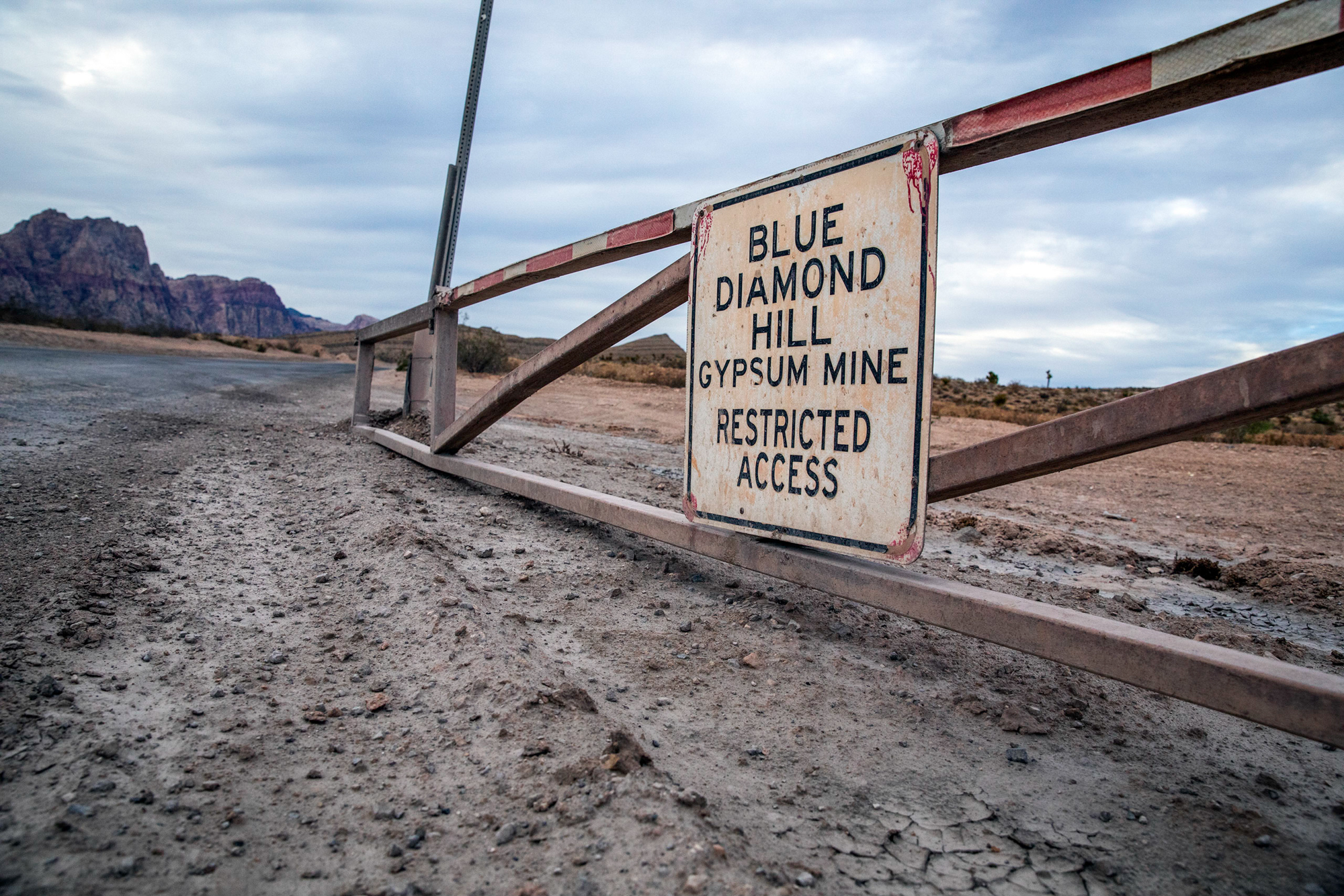When Clark County commissioners unanimously agreed earlier this month to an $80 million settlement with an aggrieved developer hoping to build thousands of homes across from Red Rock National Conservation Area, they closed the book on a yearslong string of litigation that had threatened to bankrupt the county.
For roughly two decades, the county was locked in legal battles over a proposed large-scale housing development atop Blue Diamond Hill, home to Blue Diamond Mine and directly across from Red Rock — one of Nevada’s natural crown jewels.
That litigation has stemmed from the vision of Southern Nevada developer Jim Rhodes, who, since the early 2000s, has pitched the idea of converting the mine site — which overlooks arguably some of the most scenic vistas in the county, if not the state — into thousands of houses.
Rhodes was not the first developer to propose building houses at the site, but he has been the most persistent. And after years of back and forth with the county, he’s finally won.
Facing potentially $2 billion in damages from a jury trial that was set to begin in July, county commissioners earlier this month unanimously agreed to settle with Rhodes’ Gypsum Resources, approving a master-planned community and commercial development on more than 2,000 acres in what is currently a rural open land zone. The property is bordered on three sides by Red Rock Canyon Conservation Area and directly across from the developed portion of the park that draws more than 3 million visitors per year.
The county cited a recent land use case decided by the Nevada Supreme Court as a major reason for settling, as well as fear of financial insolvency for the county. Instead of filing for bankruptcy, Clark County will instead search for ways to account for the $80 million, which is being taken out of its capital improvements budget.
The settlement “is the best we can do under these circumstances,” Commissioner Jim Gibson said during a June 18 meeting to vote on the matter. “We join you in being disappointed.”
Project opponents disagree it is the best the county can do.
More than 52,000 people signed a petition or emailed county commissioners opposing the settlement, citing concerns for the wild character of Red Rock and the rural community that surrounds it.
With towering red and white sandstone cliffs reaching thousands of feet into the sky, Red Rock Canyon is a hiker and rock climbers’ paradise. Perched a couple thousand feet higher than downtown Las Vegas, its shady canyons are home to lush plant life and surprising desert waterfalls; bighorn sheep and wild burros can be found in the more remote corners of the park.
Beyond the effects on Red Rock, opponents fear what the settlement portends for future contested development projects.
“Local governments in Nevada believe they cannot tell developers ‘No’ on what they want to do on properties they already bought,” Vinny Spotleson, chair of the Toiyabe Chapter of the Sierra Club, said after the meeting. “If we can’t engage in basic community planning in this state, this is a huge crisis.”
Read more: Dealmaking, lobbying and delays: Inside the political fight over homes at Red Rock
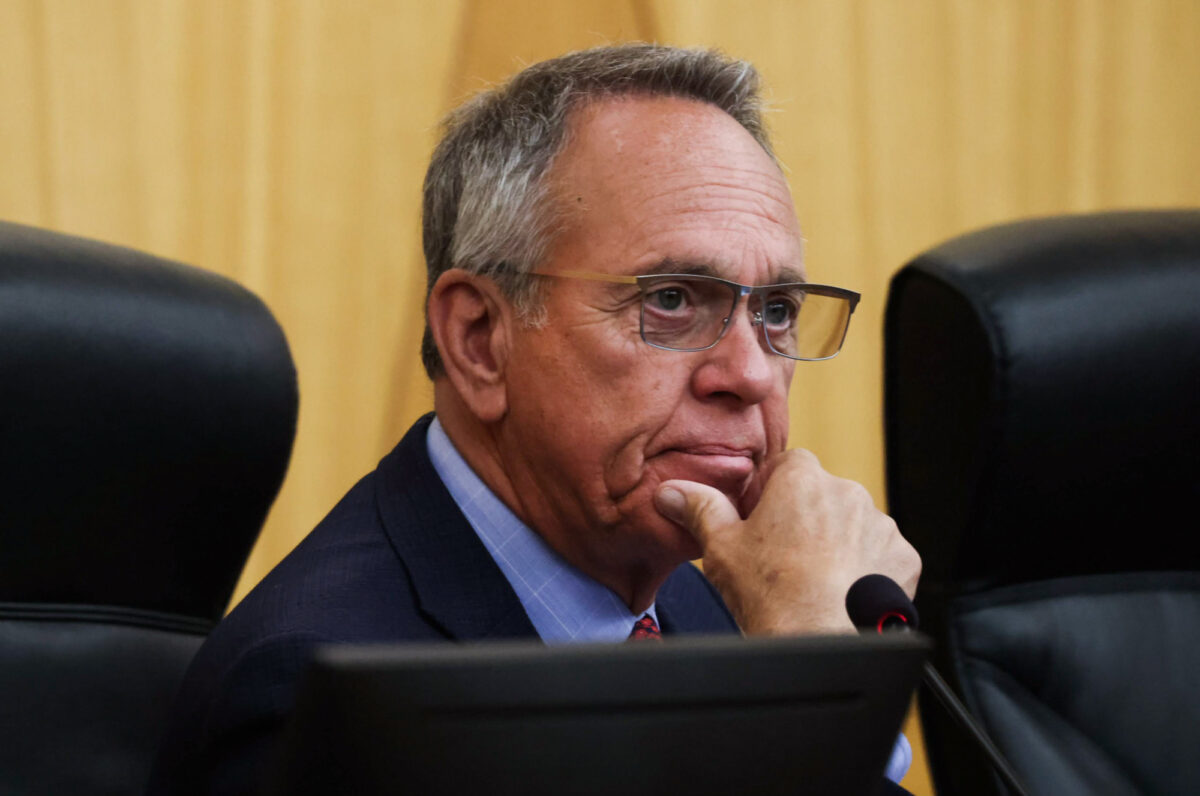
Cutting county spending to recoup the funds
One of the nation’s most populous counties, Clark County’s annual budget is staggering — the county’s general fund was nearly $2 billion in the 2024 fiscal year, about a fifth the size of the entire two-year state budget.
Over the next five years, the county’s capital improvement budget — earmarked for one-time uses such as construction of parks and fire stations and the same pot of money the county will pull from to pay the settlement — contains $4.03 billion in potential projects. The cost to construct and equip a new fire station, for example, is approximately $15 million — roughly a fifth the cost of the settlement.
In an interview, Clark County Manager Kevin Schiller told The Nevada Independent that the county is “still identifying those projects” that will be affected by the $80 million loss of funds — only a fraction of what the county estimated it would have needed to pay had it gone to trial with Rhodes and lost, but still sizable.
Clark County officials say damage experts, speaking on behalf of Rhodes, were expected to present $2 billion in damages to jurors at the July trial. In a court filing earlier this month, Rhodes testified that county officials had told him if a judgment of that size was entered against the county, they would seek special legislation to allow the county to file for bankruptcy as “a judgment of this size would financially ruin the county.”
Gibson echoed those comments during the June commission meeting, saying the issue was no longer about the development’s proximity to Red Rock but rather the “undoing of the financial capacity of the county to function.”
“This is not about we have options and we’re going to fight to the end,” he said. “We’ve fought to the end.”
Gibson did not return calls from The Nevada Independent.
Todd Bice, attorney for Rhodes, said the damage experts explored various models that in some cases showed the damages as much as $2.5 billion.
“Any number approaching what Gypsum was seeking would bankrupt them (the county) and result in an impact upon public services, including health and safety,” he told The Nevada Independent. “They were imploring Mr. Rhodes to not do that to the county.”
The $80 million settlement is a small piece of the larger equation for Gypsum, he added.
“Where Gypsum will recoup its losses is in the form of development. Eighty million does not make much of a dent in the harm to Gypsum.”
Postponing or reconfiguring projects is more palatable to the county than a potential bankruptcy, according to county staff. And there is one thing Schiller is sure of, something he’s repeated frequently since the settlement was announced — the money used to pay the settlement won’t affect county employees, wages or hiring.
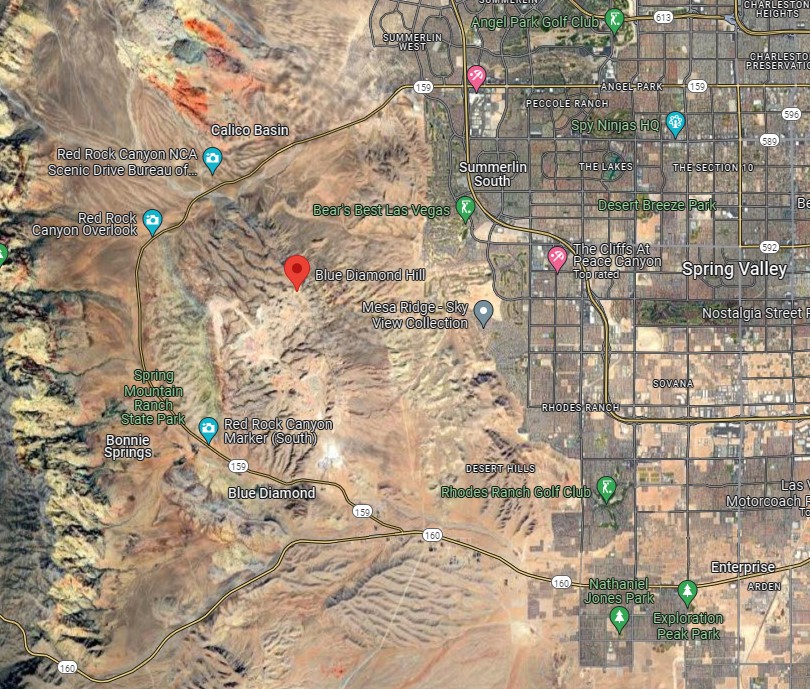
Badlands
Environmentalists and fans of Red Rock are less worried about the county’s capital projects budget and more concerned with how the settlement and the commission’s justification for it may set a precedent.
Before voting, Commission Chair Tick Segerblom said the Nevada Supreme Court’s recent Badlands decision — ordering the City of Las Vegas to pay $48 million to the owner of a shuttered golf course who was blocked from converting the course into housing — weighed heavily on his decision.
“What the Badlands decision says to me is, if the developer says, ‘This is what we’re going to do’ — then we have to let them do that,” Segerblom said at the June 18 meeting. “So, I really want the Supreme Court to look hard at what they’re telling us … What they are basically saying is that if the landowner has the right to build something, we have no ability to ask the neighbors if they want that, and that’s not the way it should be.”
In a follow-up call with The Nevada Independent, Segerblom called the court’s decision “devastating and inappropriate.”
In the Badlands case, which also spanned multiple years and lawsuits, the city cited public opposition and concerns from surrounding residents as reasons for rejecting development applications.
But Supreme Court Justice Douglas Herndon wrote in the ruling, “When a governmental agency acts in a manner that removes all the economic value from privately owned land, just compensation must be paid.”
Schiller and other county staff declined to comment on the Badlands case and how it influenced the county’s decision to settle, citing additional pending litigation.
Multiple legal experts from UNLV contacted by The Nevada Independent also declined to weigh in on the Badlands case and how it may have influenced the county’s decision to settle with Rhodes.
To Spotleson, the Sierra Club chair, Segerblom’s justification paves the way for developers to steamroll their way into building future unpopular projects.
“I didn’t realize how bad the Badlands deal was for the state,” Spotleson said. “What happens the next time a developer wants to do something? What happens to sustainability planning?”
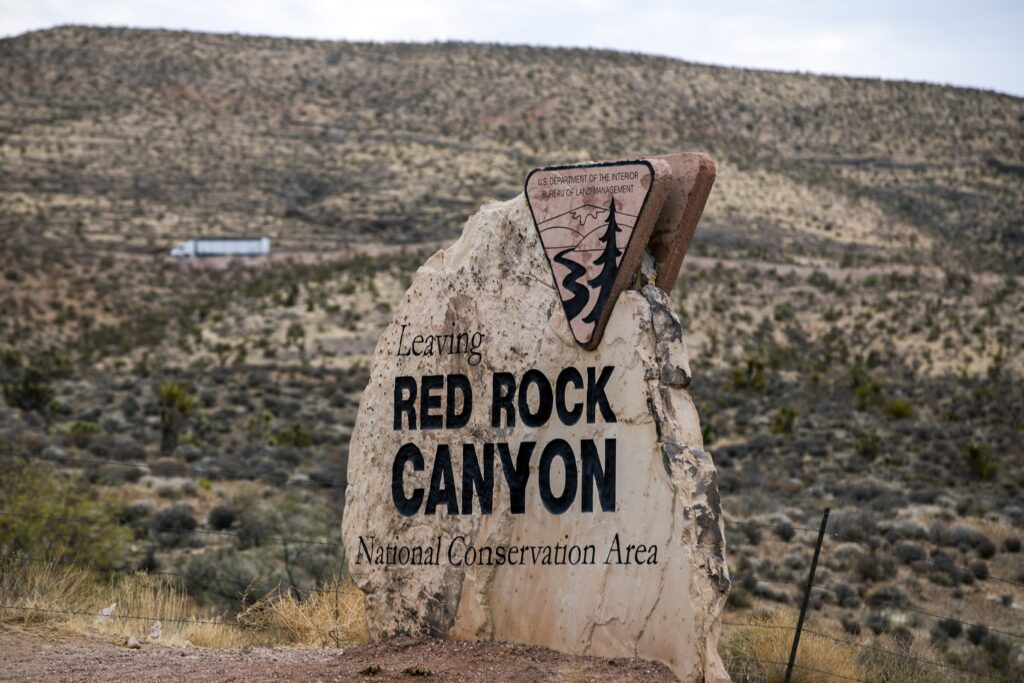
History of the project
The proposed development’s size has changed over the years — rather than the more than 5,000 homes a previous board approved, just 3,500 homes will now be permitted. Under the settlement agreement, traffic will be rerouted off Highway 159 and onto Highway 160, pending a right-of-way approval by the Bureau of Land Management. If that access is not secured within two years, the county will pay Rhodes up to an additional $6 million.
Prior to moving dirt, Rhodes still will need to jump through multiple other hoops, starting with a July 3 county zoning meeting but also including obtaining building and grading permits and completion of a drainage study.
That permitting will continue to draw out the process — litigation over development of Blue Diamond Hill dates back two decades.
In 2002, John Laing Homes proposed a project that would add 8,400 homes on 3,000 acres of the mine site, drawing public opposition because the development would be visible from Red Rock Canyon. The project fell apart when Laing Homes couldn’t get zoning approval, and the following year, Rhodes purchased just over 2,000 acres for $50 million.
Rhodes is a well-known name in the Southern Nevada development scene. He has planned, built, and sold more than 11,000 homes in 173 communities and is the force behind developments such as the 9,000-residential unit Rhodes Ranch golf course community and Southwest Ranch’s 3,500 residential units and retail and office spaces.
He’s also been involved in numerous lawsuits and filed for bankruptcy multiple times, including losing his namesake company, Rhodes Homes, to bankruptcy proceedings in 2009.
In 2003, the Legislature passed a law expanding the Red Rock Conservation area to prevent large-scale development in the area. The county followed with an ordinance echoing the state’s bill. Rhodes, who had already purchased the mine site, filed a lawsuit against the county and state, and a court ruled in his favor.
The county responded by settling with Rhodes; the state continued its litigation, eventually losing.
Rhodes told the Las Vegas Sun at the time that development might be preferable to continued mining, but that one of his main priorities was the “restoration and reclamation of this wonderful area,” and in 2011, he received county approval for residential development.
Development stalled, and the county, Gypsum and Save Red Rock became embroiled in another lawsuit — including accusations of quid pro quo between Save Red Rock and then-Commission Chair Steve Sisolak — over whether the original county decision approving construction had expired.
The attorney representing Save Red Rock, Justin Jones, was later elected in 2018 to the Clark County Commission, where he moved to deny a waiver for the project in early 2019. The commission unanimously agreed, and Rhodes sued.
In the lawsuit, Jones was accused of deleting texts in 2019 related to the development. After Rhodes’ lawsuit was rejected in federal court,he refiled in district court, which ruled in favor of Rhodes earlier this year.
Jones, who still serves on the commission, recused himself from voting on the settlement.
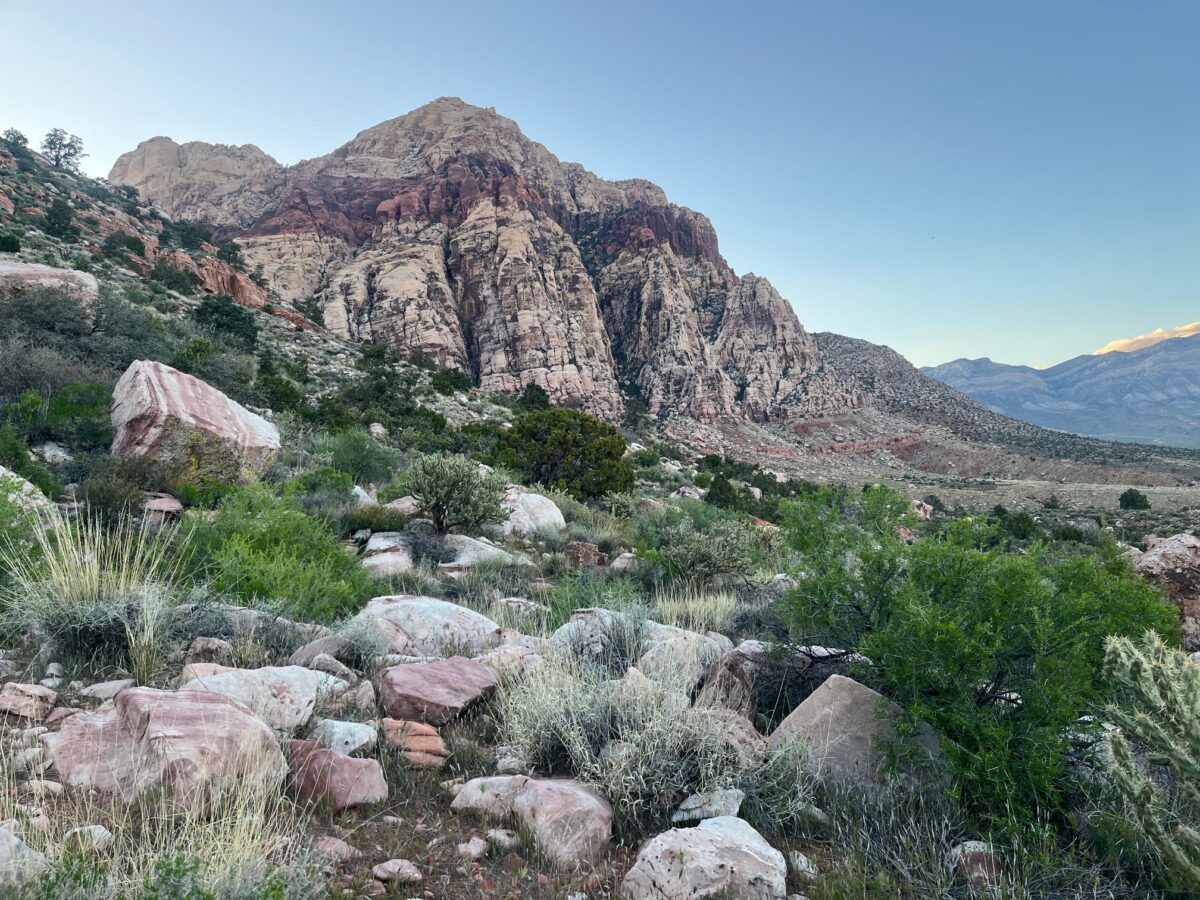
The future of Red Rock
Red Rock’s significance was first recognized in 1936 by Congress, when it designated the land as part of the Desert Game Refuge (now the Desert National Wildlife Refuge).
In the 1960s, the Bureau of Land Management (BLM) withdrew some of the canyon from mining and other development, and in 1967 designated 62,000 acres as Red Rock Canyon Recreation Lands. Over the years, the amount of protected land grew, and now nearly 200,000 acres are protected.
It was the state’s first national conservation area and is now one of the BLM’s most visited areas.
Most of the park’s several million visitors funnel through a visitor center and loop road that features a dozen or so scenic vistas, picnic areas and trailheads, but the boundary of the conservation area extends much further.
When the current protections around the land were put in place in 1990, housing developments weren’t creeping toward the park’s perimeter. The same year the conservation area was established, construction was just starting on Summerlin, and the Las Vegas Beltway and Spaghetti Bowl didn’t exist yet. But as sprawl has crept further north and south, the conservation area’s boundaries are now just a few miles away from houses and shopping centers.
Just across the highway from the Red Rock Visitor Center sits Blue Diamond Hill Gypsum Mine. The visitor center and mine are bisected by Highway 159, designated a “Nevada Scenic Byway” for its outstanding views of the sandstone cliffs and a popular course for road cyclists and runners.
The mine has been active since 1902, with the Blue Diamond Co. taking ownership of the Gypsum mine in the 1920s and building corporate housing for its workers — which is now the rural community of Blue Diamond, home to several hundred people.
Having a mine across from a conservation area is not ideal, but having houses, commercial development, nighttime light pollution and heavy traffic will mark the end of the area’s treasured rural character, according to those trying to protect Red Rock.
“You can’t contain the effects of urban development on top of a mountain in the middle of a canyon. Every big house that has a view of the canyon or view of the city, if that house can see the canyon and the city, the canyon and city can see that house,” said Heather Fisher, president of Save Red Rock. “You’ll be able to look across and see the development, and for the next how many years, you’ll be able to hear the beeping and see the construction and the dust.”
There are protections in place for the conservation area, including the Red Rock Overlay, designed to maintain the area’s rural character and minimize additional traffic. While the Overlay mandates no more than one house every 2 acres, Rhodes is exempt from that requirement.
Now with the settlement in place, thousands of houses are slated for construction atop the hill.
“It’s problematic. It’s not like [it’s] down in the canyon. It’s overlooking the canyon. It’s on the one mountain that separates the canyon from the city,” Fisher said. “You leave Las Vegas, you go around the corner, and you don’t see Las Vegas anymore. [The mountain is] a natural barrier.”
As part of the settlement, the county will be able to purchase 192 acres of environmentally sensitive land, protecting tortoise habitat and a rare cactus.
That tradeoff isn’t worth it to Fisher.
“If the whole thing has to be developed for that to become public land, we don’t want it,” she said. “If you can’t protect your crown jewel, what can you protect? There’s a lot of random desert you can build in, but only one Red Rock.”

